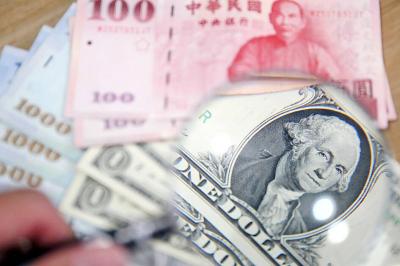EVA Airways Corp (長榮航空) on Thursday launched a digital platform for passengers to upload COVID-19 test results and proof of vaccination against the virus, as the airline aims to reduce physical contact between passengers and crew members, the company said in a statement last week.
The airline initially offered the service to passengers on its two most popular routes, from Taiwan Taoyuan International Airport to Los Angeles and San Francisco, it said.
Instead of showing proof of a negative test result at the check-in desk, passengers could upload the QR code on the result of their negative polymerase chain reaction (PCR) test for the airline to verify in advance, it said.

Photo courtesy of EVA Airways Corp
“With the new system, the procedure of examining passengers’ PCR test results will be streamlined, and unnecessary physical contact between crew and passengers can be avoided,” EVA Airways said.
However, passengers should carry their physical test report with them, as border officials in Taiwan and the US might need to check the document, it said.
Digital COVID-19 information is expected to play an increasingly large role in international air travel, as many countries are starting to request test reports and proof of vaccination before boarding, EVA Air said.
The airline is in talks with the International Air Transport Association about the integration of its platform with the agency’s passenger health database, it said.
EVA Air’s cumulative revenue for the first five months of the year fell 16 percent year-on-year to NT$36.13 billion (US$1.29 billion), with passenger revenue diving 85 percent to NT$2.88 billion, while revenue from its cargo business expanded 75 percent to NT$2.84 billion, company data showed.

The US dollar was trading at NT$29.7 at 10am today on the Taipei Foreign Exchange, as the New Taiwan dollar gained NT$1.364 from the previous close last week. The NT dollar continued to rise today, after surging 3.07 percent on Friday. After opening at NT$30.91, the NT dollar gained more than NT$1 in just 15 minutes, briefly passing the NT$30 mark. Before the US Department of the Treasury's semi-annual currency report came out, expectations that the NT dollar would keep rising were already building. The NT dollar on Friday closed at NT$31.064, up by NT$0.953 — a 3.07 percent single-day gain. Today,

‘SHORT TERM’: The local currency would likely remain strong in the near term, driven by anticipated US trade pressure, capital inflows and expectations of a US Fed rate cut The US dollar is expected to fall below NT$30 in the near term, as traders anticipate increased pressure from Washington for Taiwan to allow the New Taiwan dollar to appreciate, Cathay United Bank (國泰世華銀行) chief economist Lin Chi-chao (林啟超) said. Following a sharp drop in the greenback against the NT dollar on Friday, Lin told the Central News Agency that the local currency is likely to remain strong in the short term, driven in part by market psychology surrounding anticipated US policy pressure. On Friday, the US dollar fell NT$0.953, or 3.07 percent, closing at NT$31.064 — its lowest level since Jan.

The New Taiwan dollar and Taiwanese stocks surged on signs that trade tensions between the world’s top two economies might start easing and as US tech earnings boosted the outlook of the nation’s semiconductor exports. The NT dollar strengthened as much as 3.8 percent versus the US dollar to 30.815, the biggest intraday gain since January 2011, closing at NT$31.064. The benchmark TAIEX jumped 2.73 percent to outperform the region’s equity gauges. Outlook for global trade improved after China said it is assessing possible trade talks with the US, providing a boost for the nation’s currency and shares. As the NT dollar

PRESSURE EXPECTED: The appreciation of the NT dollar reflected expectations that Washington would press Taiwan to boost its currency against the US dollar, dealers said Taiwan’s export-oriented semiconductor and auto part manufacturers are expecting their margins to be affected by large foreign exchange losses as the New Taiwan dollar continued to appreciate sharply against the US dollar yesterday. Among major semiconductor manufacturers, ASE Technology Holding Co (日月光), the world’s largest integrated circuit (IC) packaging and testing services provider, said that whenever the NT dollar rises NT$1 against the greenback, its gross margin is cut by about 1.5 percent. The NT dollar traded as strong as NT$29.59 per US dollar before trimming gains to close NT$0.919, or 2.96 percent, higher at NT$30.145 yesterday in Taipei trading